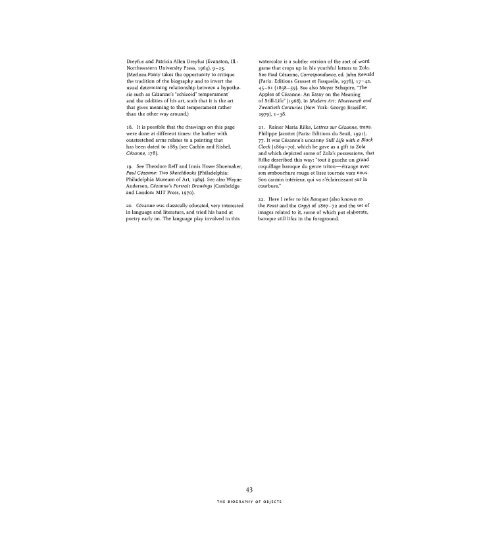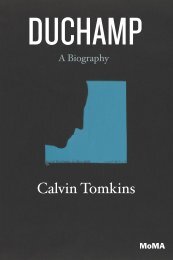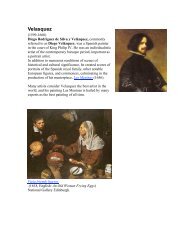Still Life in Watercolors
qbj8dgc
qbj8dgc
- No tags were found...
Create successful ePaper yourself
Turn your PDF publications into a flip-book with our unique Google optimized e-Paper software.
Dreyfus and Patricia Allen Dreyfus (Evanston, 111.:<br />
Northwestern University Press, 1964), 9-25.<br />
(Merleau-Ponty takes the opportunity to critique<br />
the tradition of the biography and to <strong>in</strong>vert the<br />
usual determ<strong>in</strong><strong>in</strong>g relationship between a hypothesis<br />
such as Cezanne's "schizoid" temperament'<br />
and the oddities of his art, such that it is the art<br />
that gives mean<strong>in</strong>g to that temperament rather<br />
than the other way around.)<br />
18. It is possible that the draw<strong>in</strong>gs on this page<br />
were done at different times: the bather with<br />
outstretched arms relates to a pa<strong>in</strong>t<strong>in</strong>g that<br />
has been dated to 1885 (see Cach<strong>in</strong> and Rishel,<br />
Cezanne, 178).<br />
19. See Theodore Reff and Innis Howe Shoemaker,<br />
Paul Cézanne: Two Sketchbooks (Philadelphia:<br />
Philadelphia Museum of Art, 1989). See also Wayne<br />
Andersen, Cezanne's Portrait Draw<strong>in</strong>gs (Cambridge<br />
and London: MIT Press, 1970).<br />
20. Cézanne was classically educated, very <strong>in</strong>terested<br />
<strong>in</strong> language and literature, and tried his hand at<br />
poetry early on. The language play <strong>in</strong>volved <strong>in</strong> this<br />
watercolor is a subtler version of the sort of word<br />
game that crops up <strong>in</strong> his youthful letters to Zola.<br />
See Paul Cézanne, Correspondance, éd. John Rewald<br />
(Paris: Editions Grasset et Fasquelîe, 1978), 17-42,<br />
45-61 (1858-59). See also Meyer Schapiro, "The<br />
Apples of Cézanne: An Essay on the Mean<strong>in</strong>g<br />
of <strong>Still</strong>-<strong>Life</strong>" (1968), <strong>in</strong> Modern Art: N<strong>in</strong>eteenth and<br />
Twentieth Centuries (New York: George Braziller,<br />
1979), 1-38-<br />
21. Ra<strong>in</strong>er Maria Rilke, Lettres sur Cézanne, trans.<br />
Philippe Jacottet (Paris: Editions du Seuil, 1991);<br />
77. It was Cezanne's uncanny <strong>Still</strong> <strong>Life</strong> with a Black<br />
Clock (1869-70), which he gave as a gift to Zola<br />
and which depicted some of Zola's possessions, that<br />
Rilke described this way: "tout à gauche un grand<br />
coquillage baroque du genre triton—étrange avec<br />
son embouchure rouge et lisse tournée vers nous.<br />
Son carm<strong>in</strong> <strong>in</strong>térieur, qui va s'éclaircissant sur la<br />
courbure."<br />
22. Here I refer to his Banquet (also known as<br />
the Feast and the Orgy) of 1867-72 and the set of<br />
images related to it, some of which put elaborate,<br />
baroque still lifes <strong>in</strong> the foreground.<br />
43<br />
THE BIOGRAPHY OF OBJECTS




